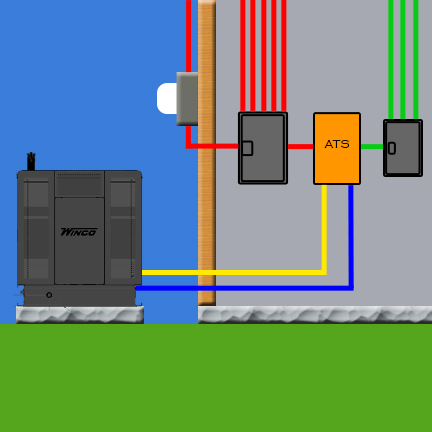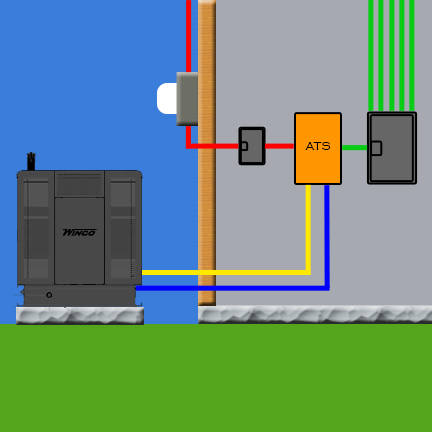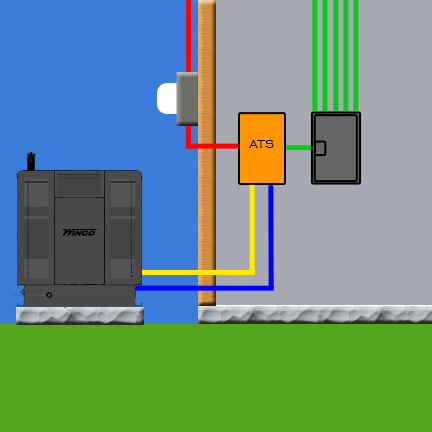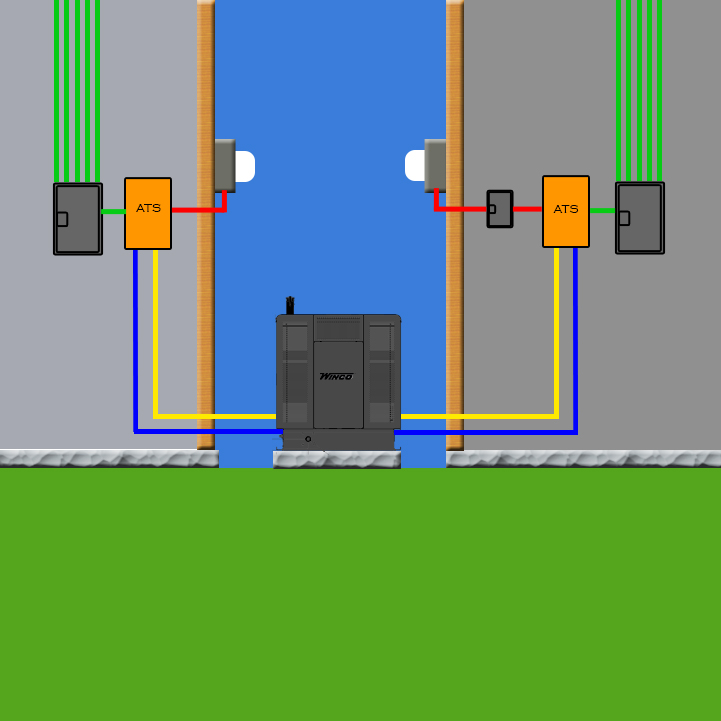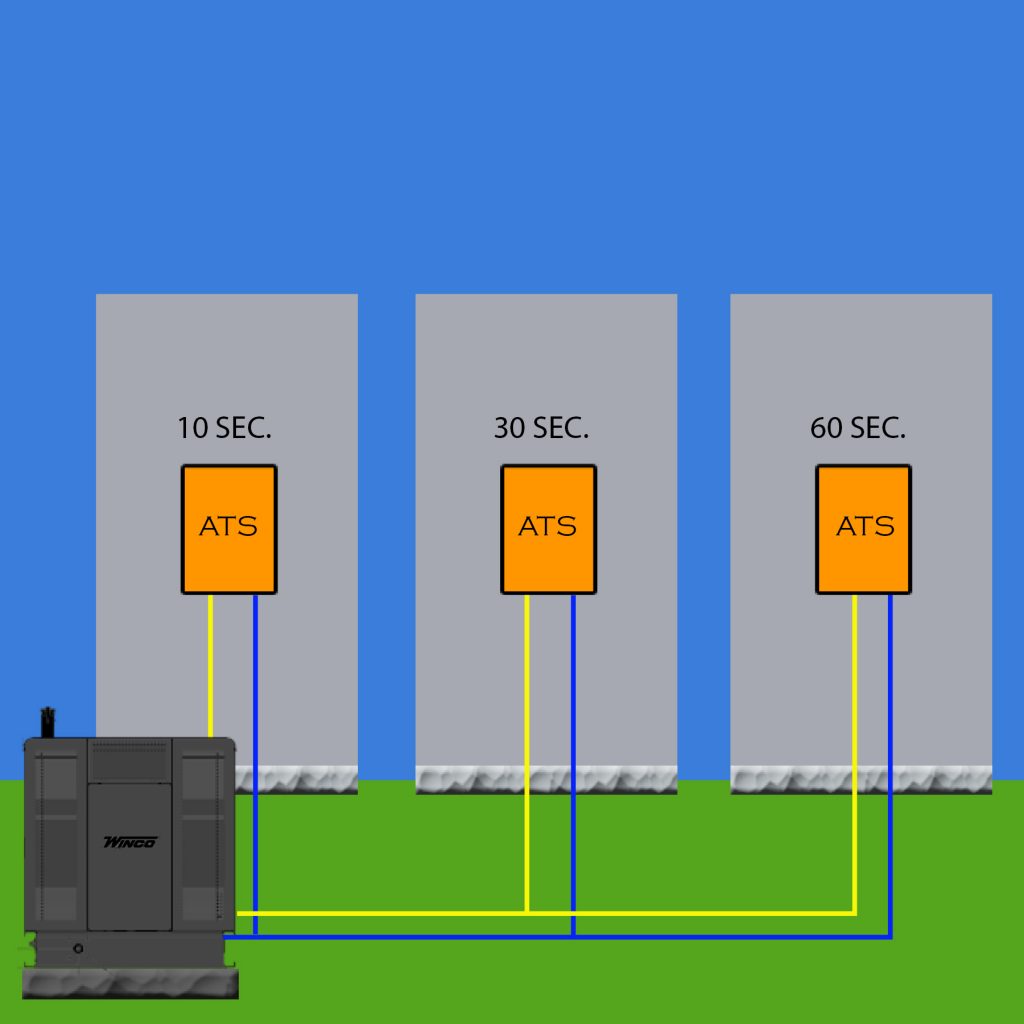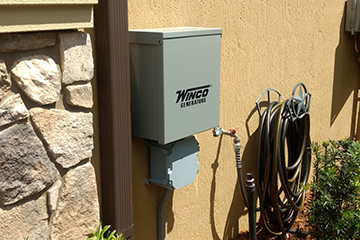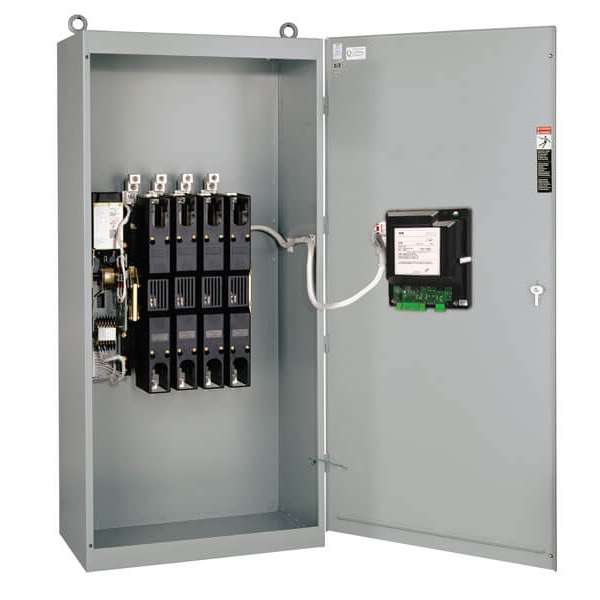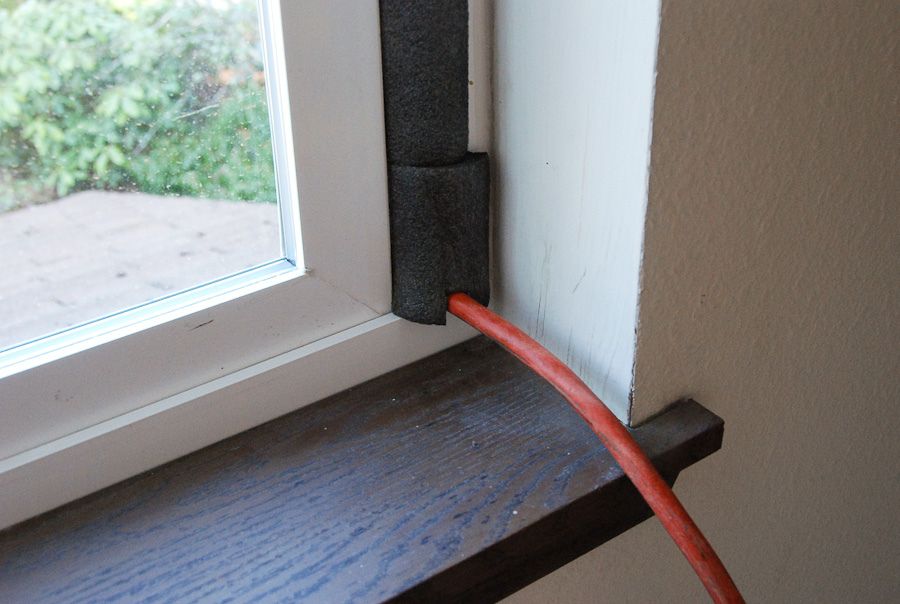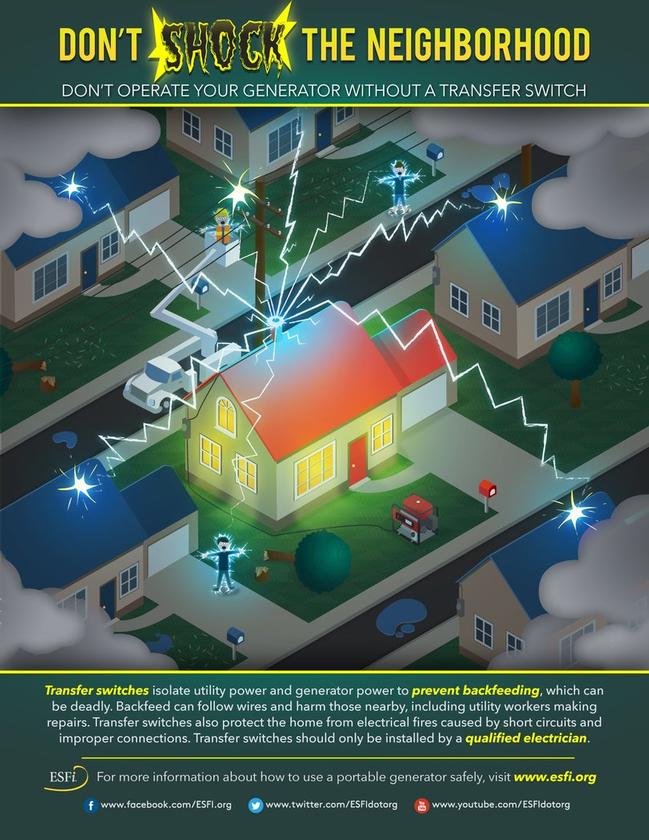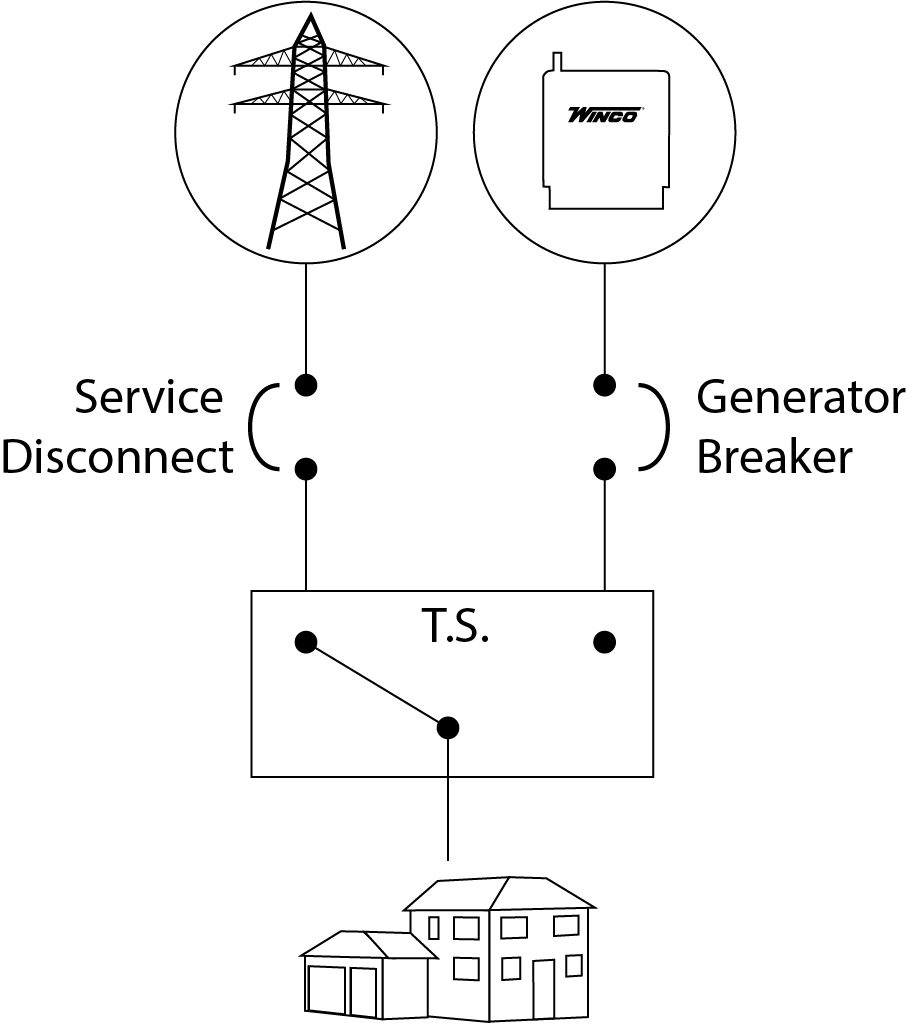Where you install the transfer switch will depend on the type of switch and what type of generator you will be using. The following installations will work for both manual and automatic transfer switches.
Emergency Distribution:
The transfer switch is installed between a main panel and a sub panel. The main panel connects to the non-essential loads. The sub panel connects to the essential loads. In the event of an outage, the transfer switch will only transfer power to the essential load panel.
This type of installation allows you to purchase a smaller generator and a smaller amperage transfer switch. As a result, it will keep costs down.
Full Load (Non-SE Rated):
The transfer switch will be located after the service disconnect panel of the building. There is the option to manually switch breakers off on any load you do not want to power.
You will want to size your generator and transfer switch amperage to match the load.
Full Load (SE Rated):
An SE rated transfer switch has a service disconnect breaker installed. Therefore, the switch will be installed directly to the utility power entering the building. The main panel will have the essential loads connected. There is the option to manually switch breakers off on any load you do not want to power.
You will want to size your generator and transfer switch amperage to match what will be powered with the generator.
Multiple Services:
One generator can provide backup power to multiple services. You can install the transfer switches in any variation of the three installations mentioned above.
You will want to size the generator large enough to run normal loads and start large motors.
Transfer switch as a Load Control Device:
Starting large motors at the same time will require a large generator to deal with the inrush. A cost effective solution is to install multiple transfer switches. By setting the transfer delay in staggered intervals each load will be added to the generator separately reducing total inrush. You can install the transfer switches in any variation of the three installations mentioned above on each load.
Be sure to size the generator so it will be able to run all connected loads and also have enough amperage to start the last motor.

